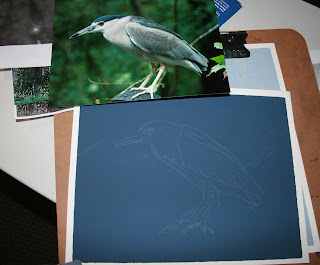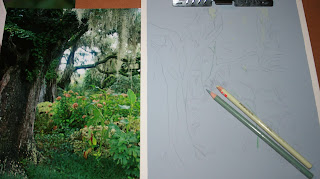Titanium white is highly reflective. That is why it is chosen for this under layer. As the light passes through the layers of oil paint, it is reflected back and brighten by Titanium white.
White and super white papers perform the same function for colored pencils. Many do not realized just how transparent colored pencils are. But they are. Not as transparent as watercolors, but someplace more transparent than Quash. Now, you can get very good, very dramatic results using colored or toned papers and backgrounds, but you do have to know how to work with it.

For the small Heron drawing, on a dark toned paper from Colourfix, I am using a combination of studio white pencils, and a clear wax blender pencil from Prisma color. Putting down a layer of pure binder wax, which is what a blender pencil is, will give me a good base to blend in the many, many shades of white/blue and gray that make up this bird.
On this blue/gray background the pure wax is leaving a coating of white wax that will allow great blending. It will also add to the drama of the finished piece, acting as a reflecting layer underneath the pigmented layers.


